The middle of April, we had a training week. First was an ice course for the search and rescue. My knees won’t let me do the exercises, but I went along as photographer.
First is to suit up. (This takes so long any victim will be long past help!)
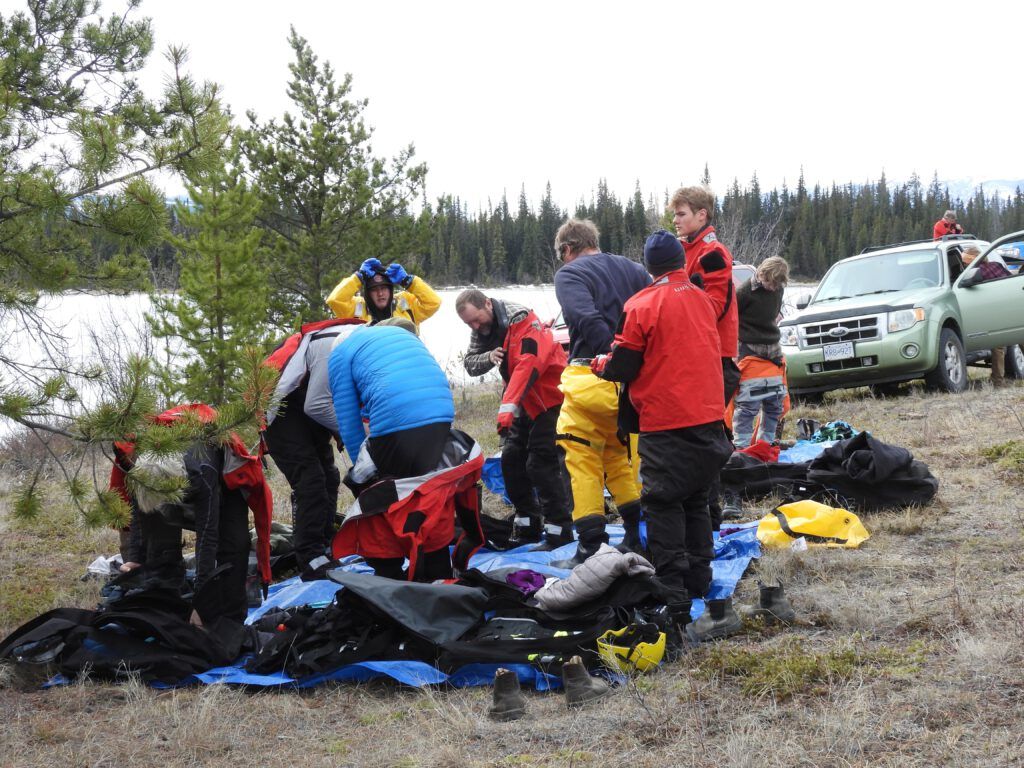
Gear has to be buddy-checked.
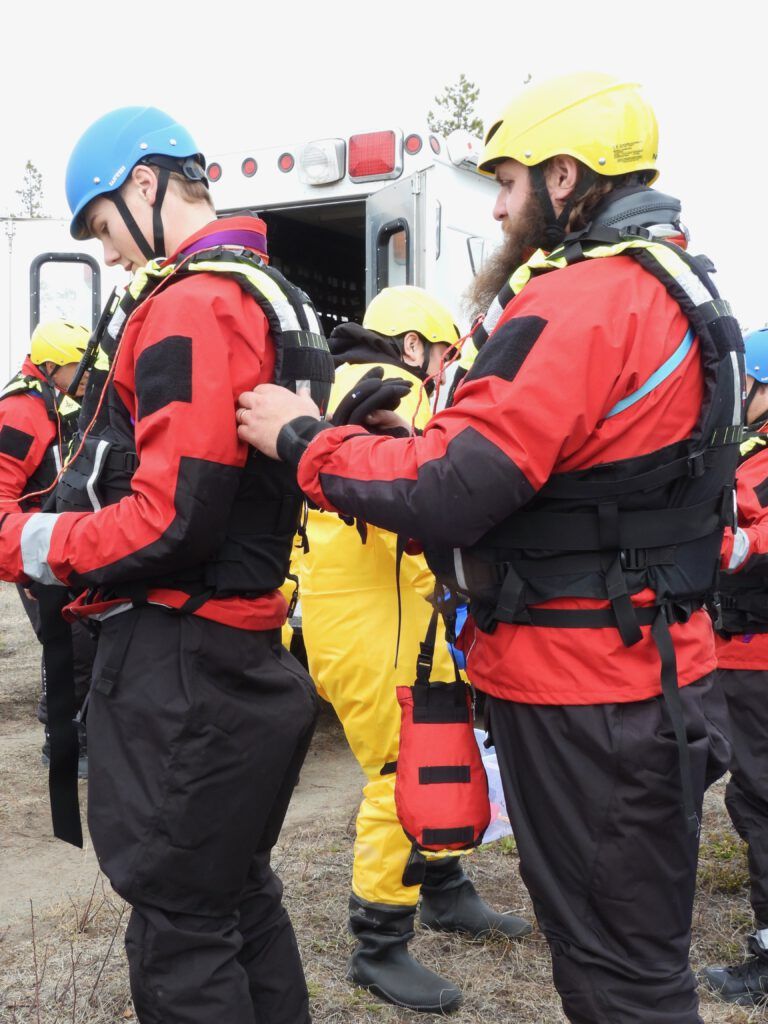
And they’re off!
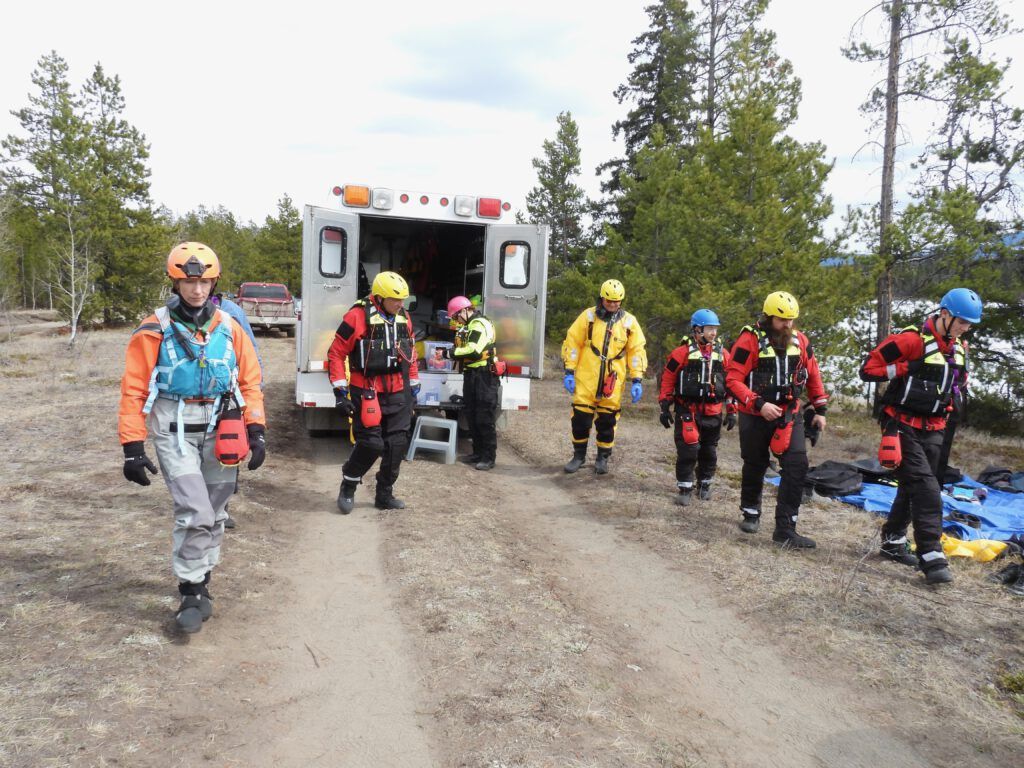
The lake chosen was already losing its ice so I couldn’t risk going onto it.
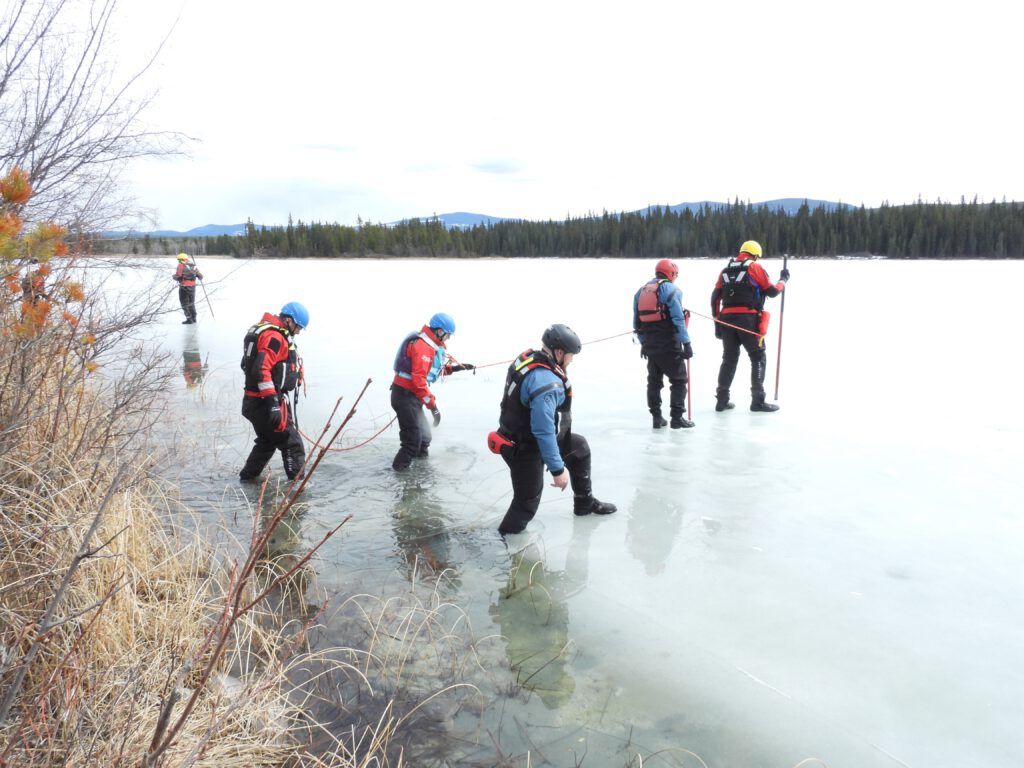
The middle was much firmer, though.
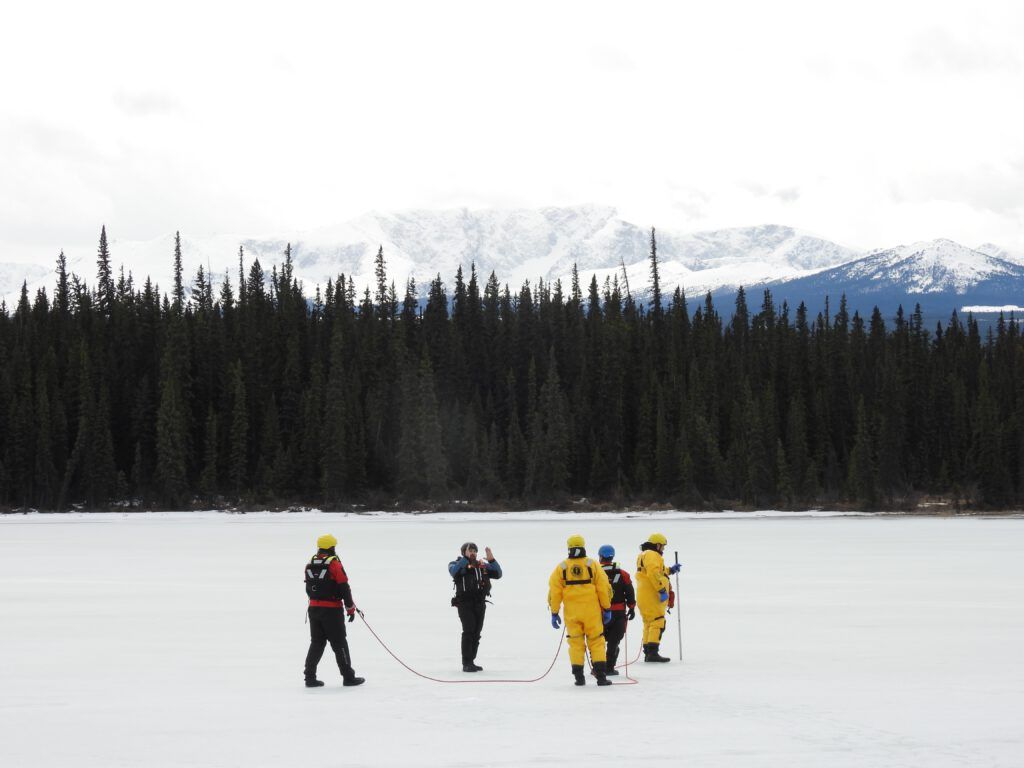
They walked to a disintegrating part until they fell through.
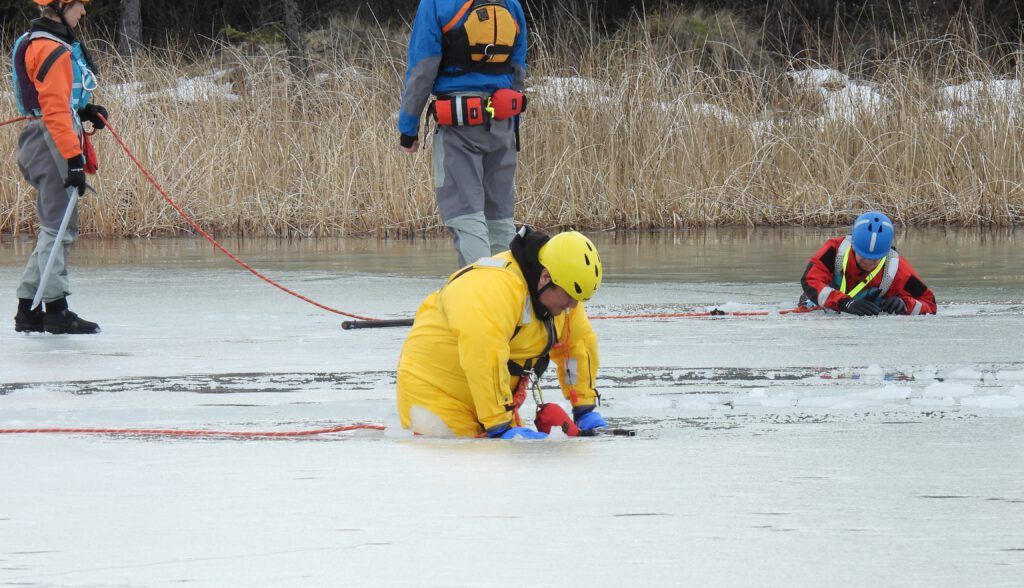
Then practiced pulling each other out in various ways.
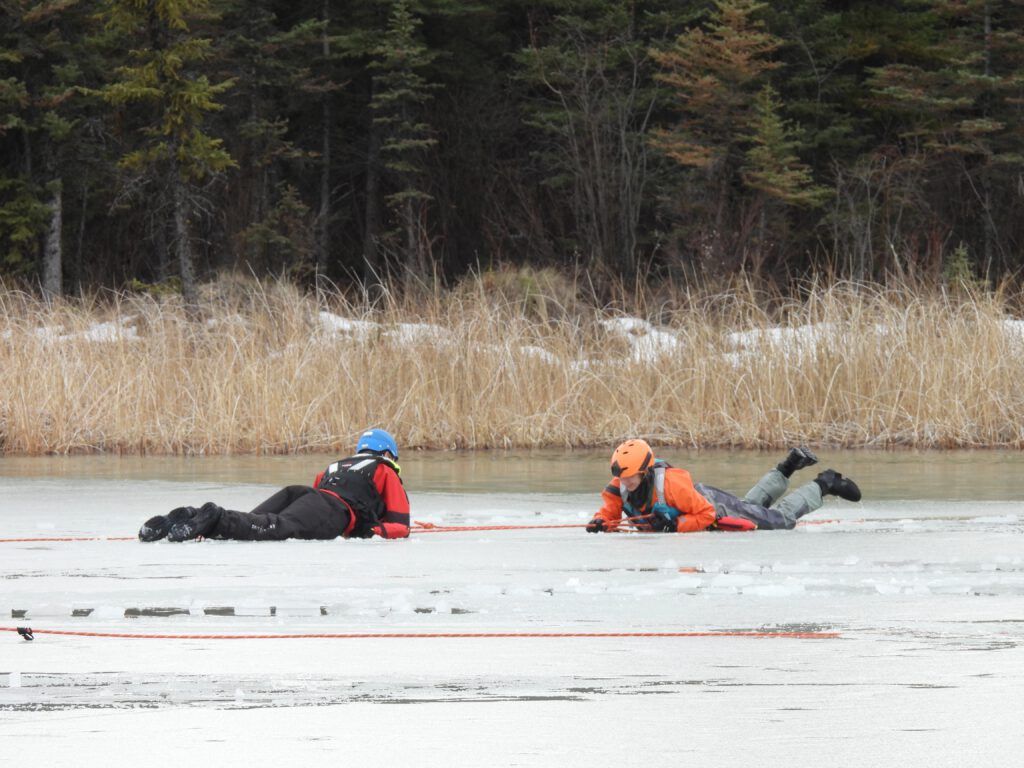
Jade was having a good time. I told her afterwards that she was too happy to be a rescue victim but she said it was hard to be serious in 20″ of water.
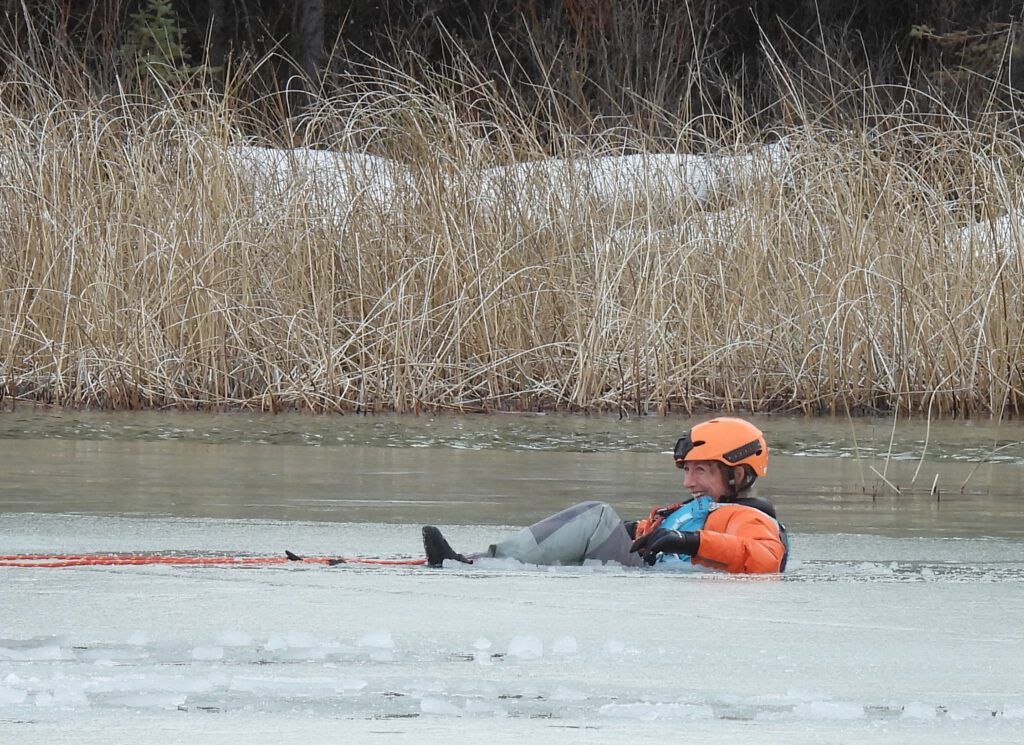
Midweek, we had an S-100 course laid on by forestry for firefighters. There was such an outcry last year when locals were forbidden to fight their own fires, that the government have finally conceded that locals, with local knowledge, and many with years of “official” firefighting experience, have a lot to offer. Although our area was largely clear of fires last year, except for a big one at the end of the season, we are very prone to them. There was a good turnout for the course. The first day was indoors looking at slide shows, but on the second day we messed around with pumps. One of the instructors showed how a firefighter loads up with pump, hoses, tools, and gas to get to the water. In downtown Tatla Lake it was easy of course, but the hike might be much tougher in the bush.
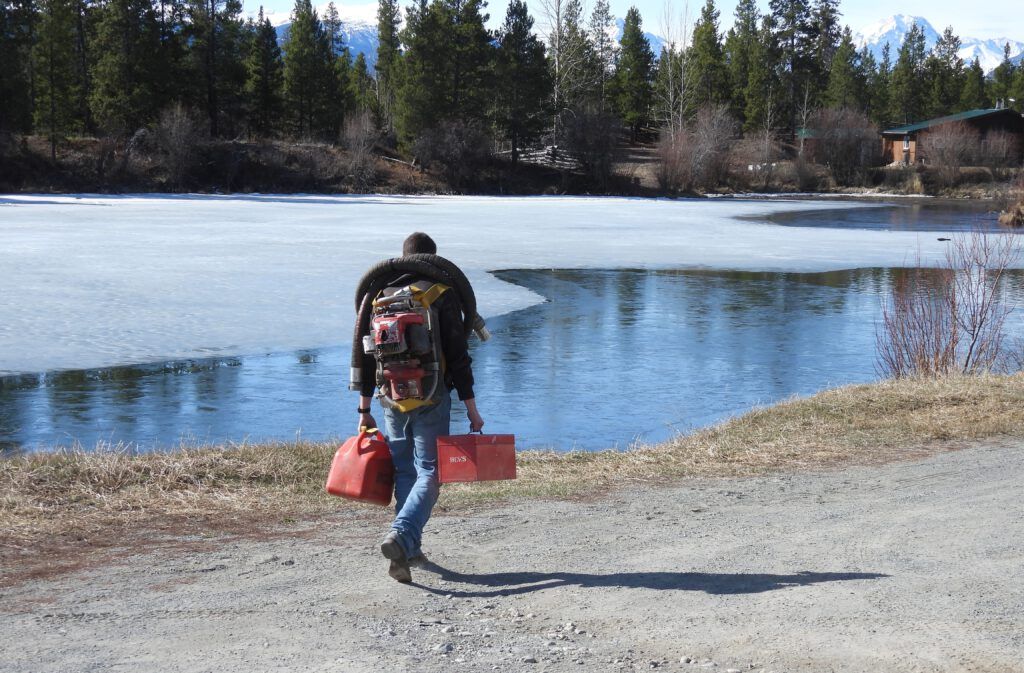
A few barrows goldeneyes viewed our incursion with suspicion. How tiny the feisty white-headed buffleheads are!
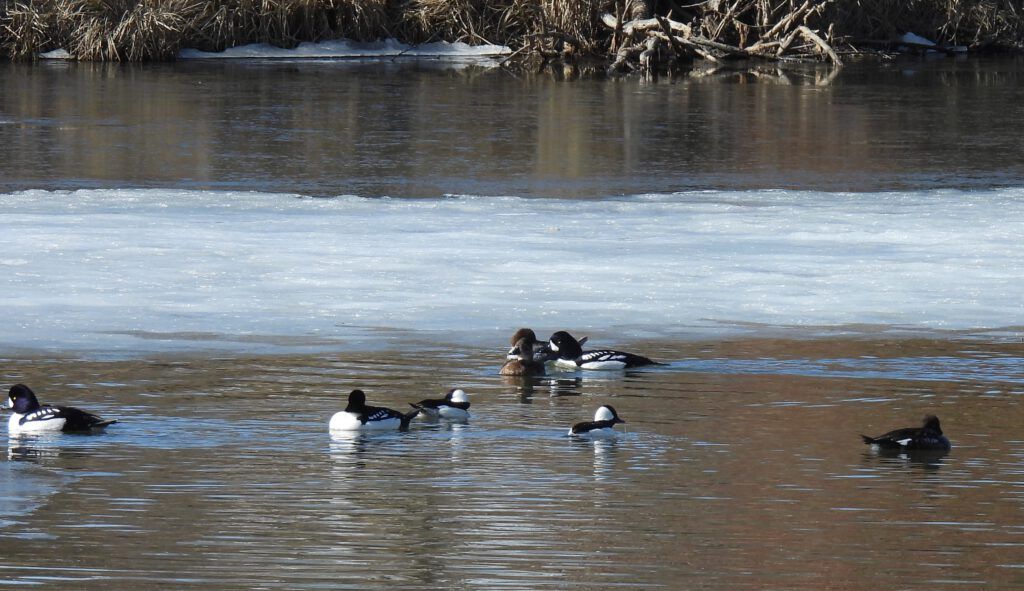
Setting up.
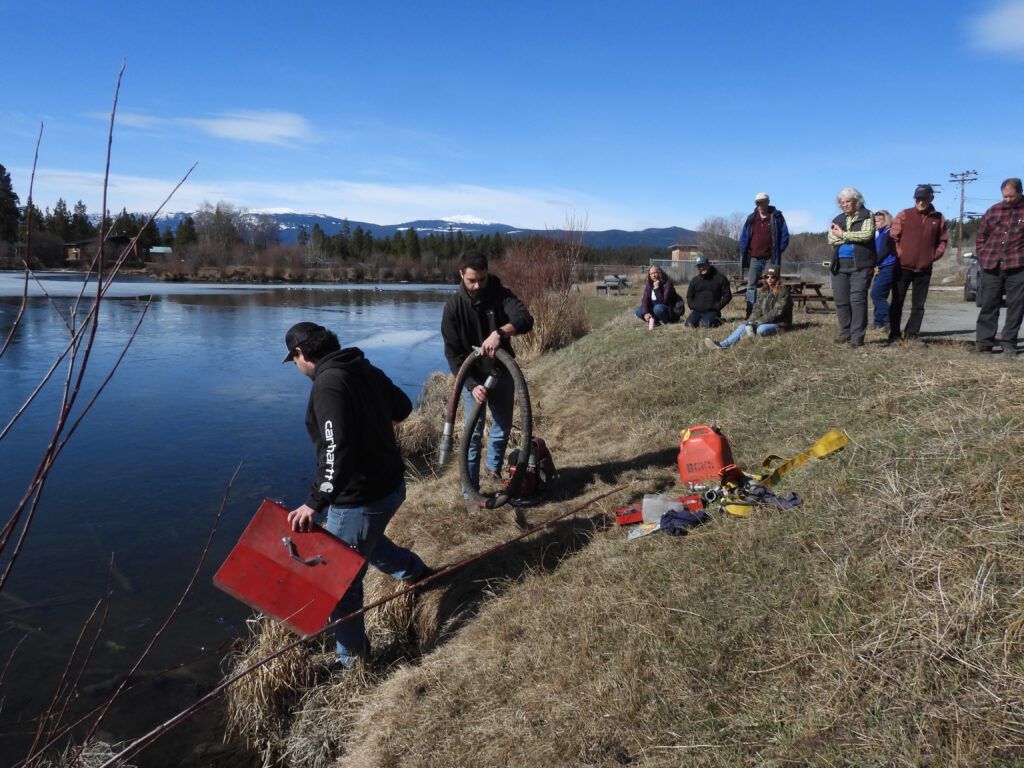
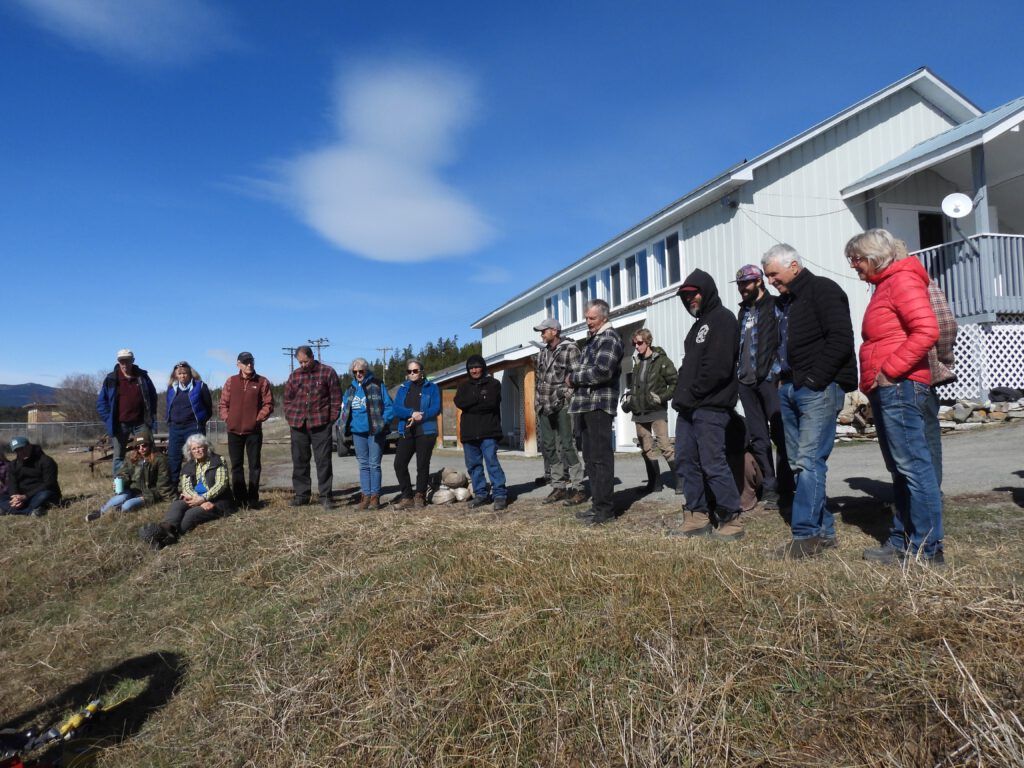
The bladder would normally be some distance from the water source, but this was just a demo.
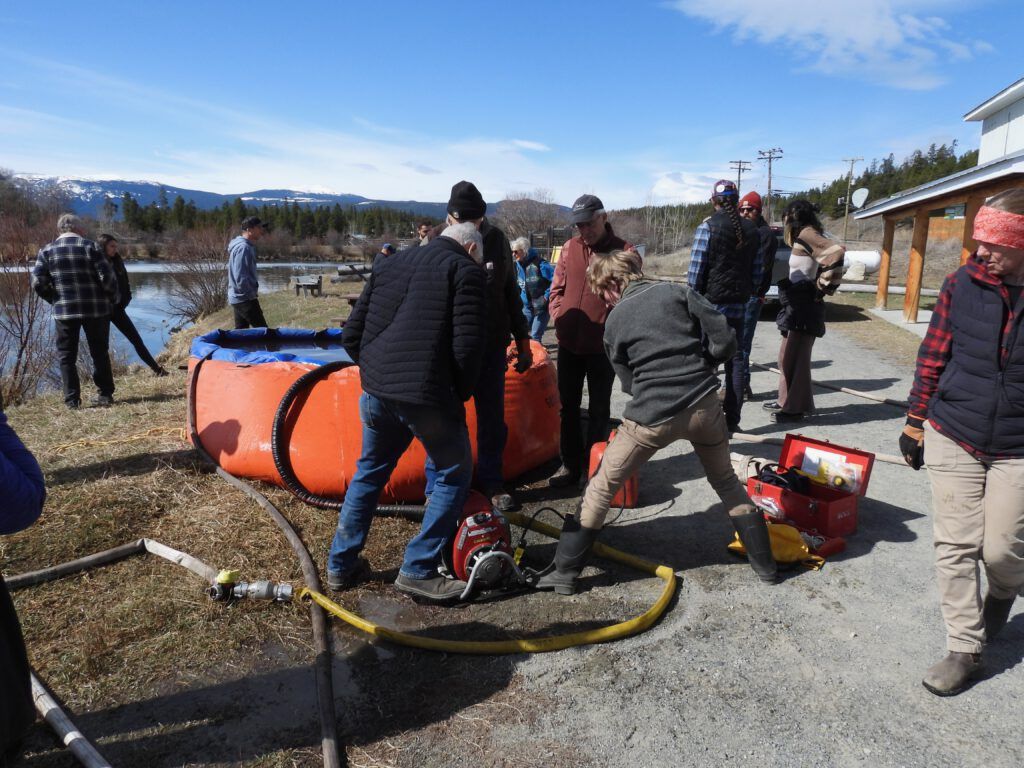
From the bladder, two pumps were hooked up in tandem. Certain types of hoses and valves had to be used to make the system work. With this setup, water can be moved a considerable distance and elevation from the water source. These pumps are a bit more tricky to operate than mine, but they are much more powerful
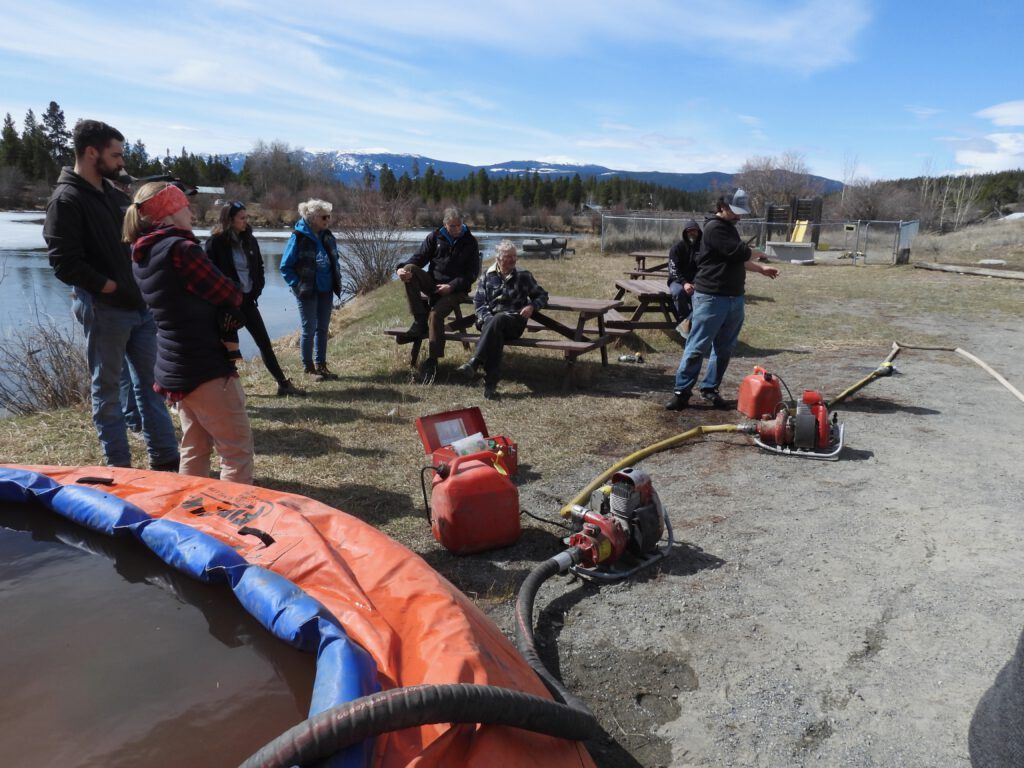
Finally, the instructors showed us how to roll up the hoses into a “melon,” which is the most convenient way to both transport and unravel them when needed.
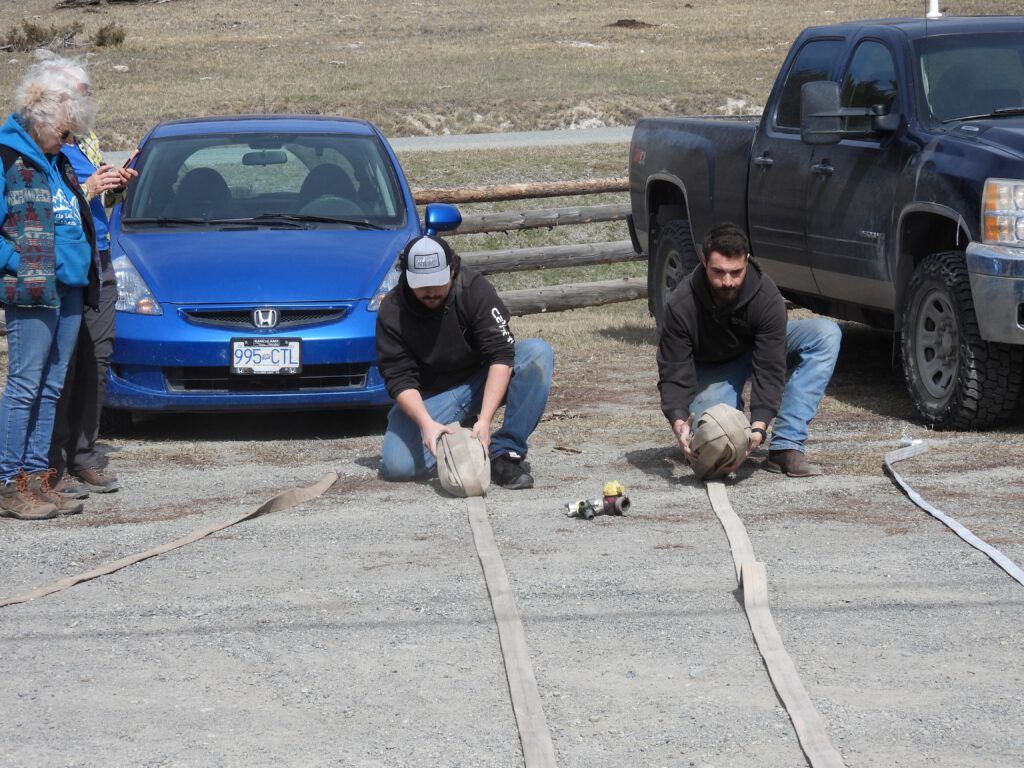
At the end of the week was a helicopter awareness course. All Search and Rescue members are obliged to do this once a year. White Saddle Air is based at Bluff Lake.
the course coincided with an absolutely spectacular day.
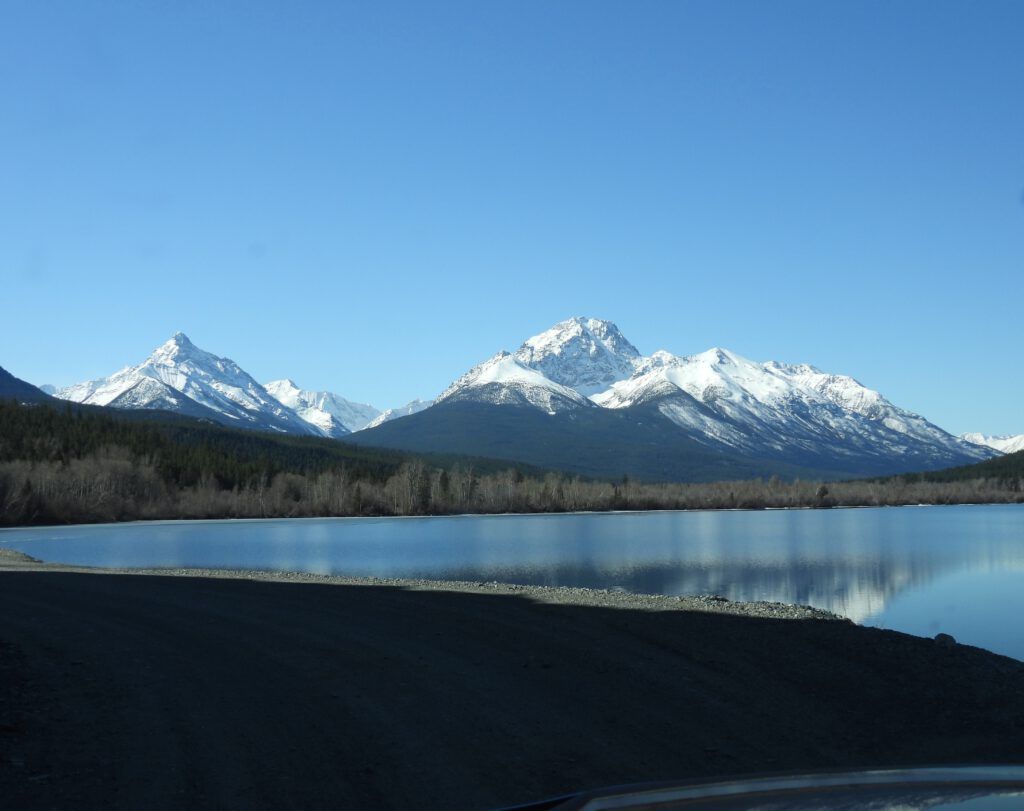
We learn to stay away from the dangerous parts of the helicopter – not only for ourselves, but also to avoid damaging the colossally expensive machine.
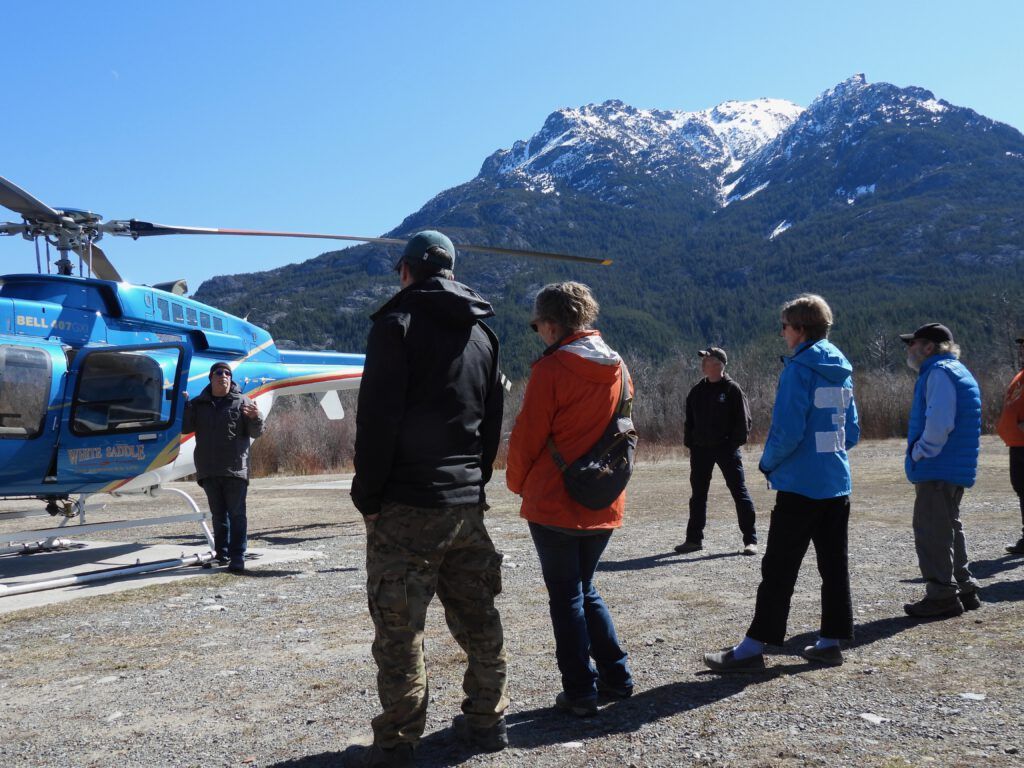
The next part was a hover exit. Again my knees would not have cooperated – one needs to be very slow.
First was a dry run. People sat in the machine and learned the routine of dealing with seat belts – nothing loose must flap outside the machine – and things like no hats or anything else that could be sucked up by the rotors and create problems.
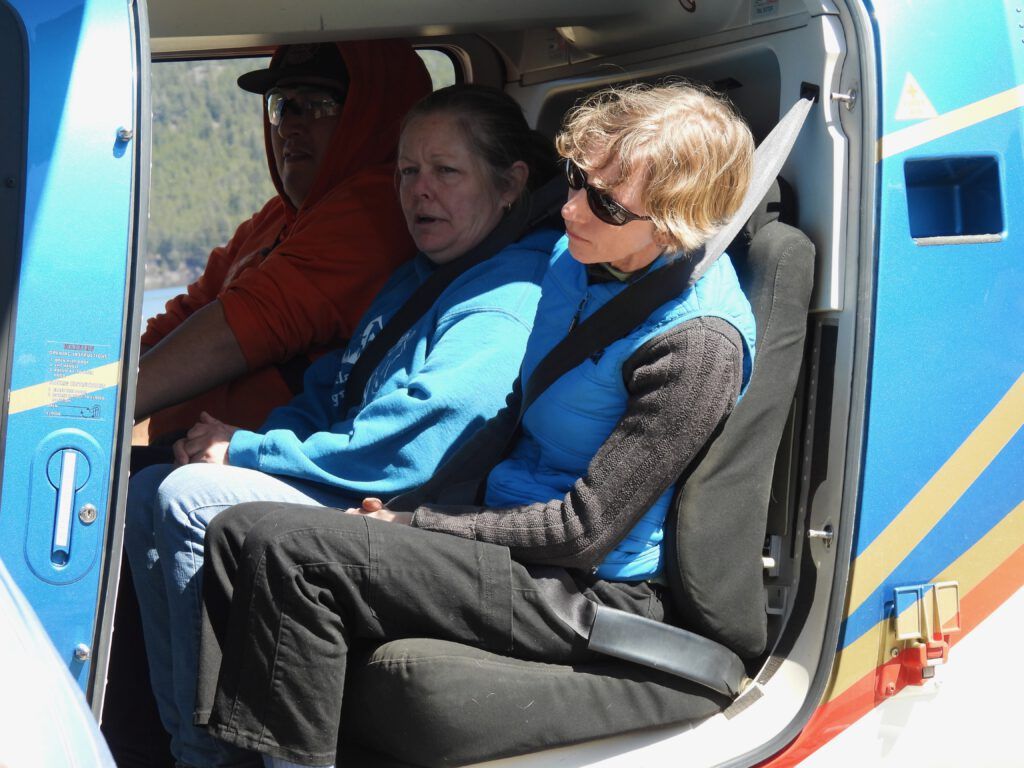
The helicopter took off. The first person had to lower his or herself carefully to the ground to allow the pilot to adjust his machine to the change of weight. Not so serious with a light person, but a whole different ball game with a heavy one. Firefighters on an initial attack team are not allowed to weigh more than 180 lbs.
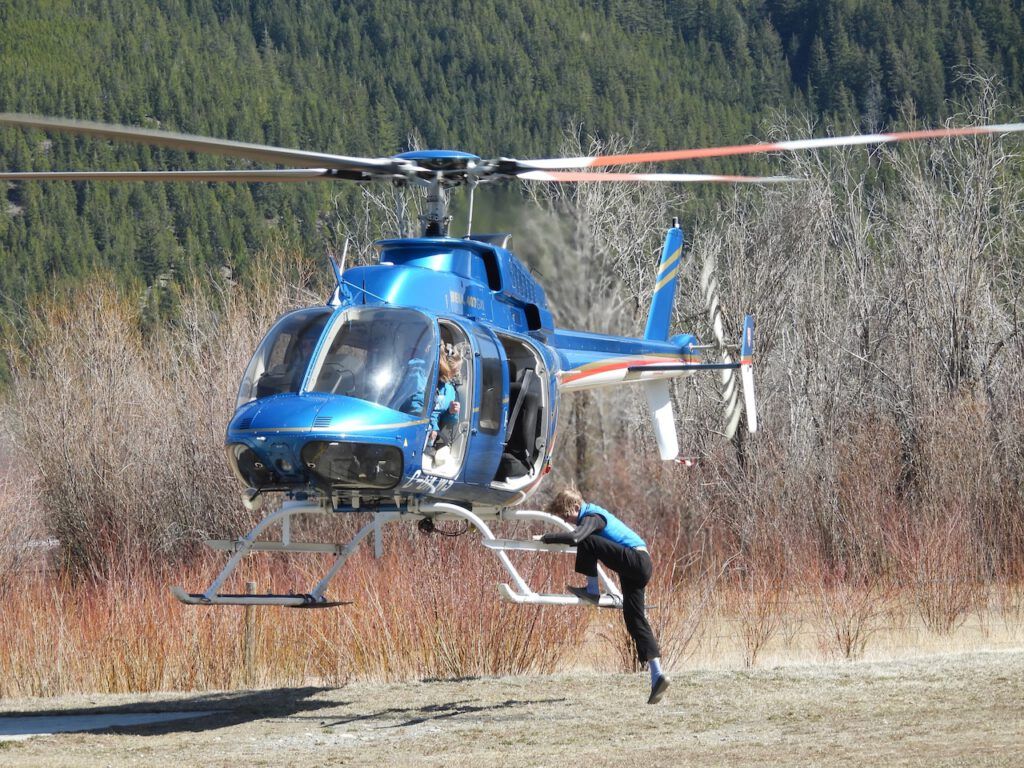
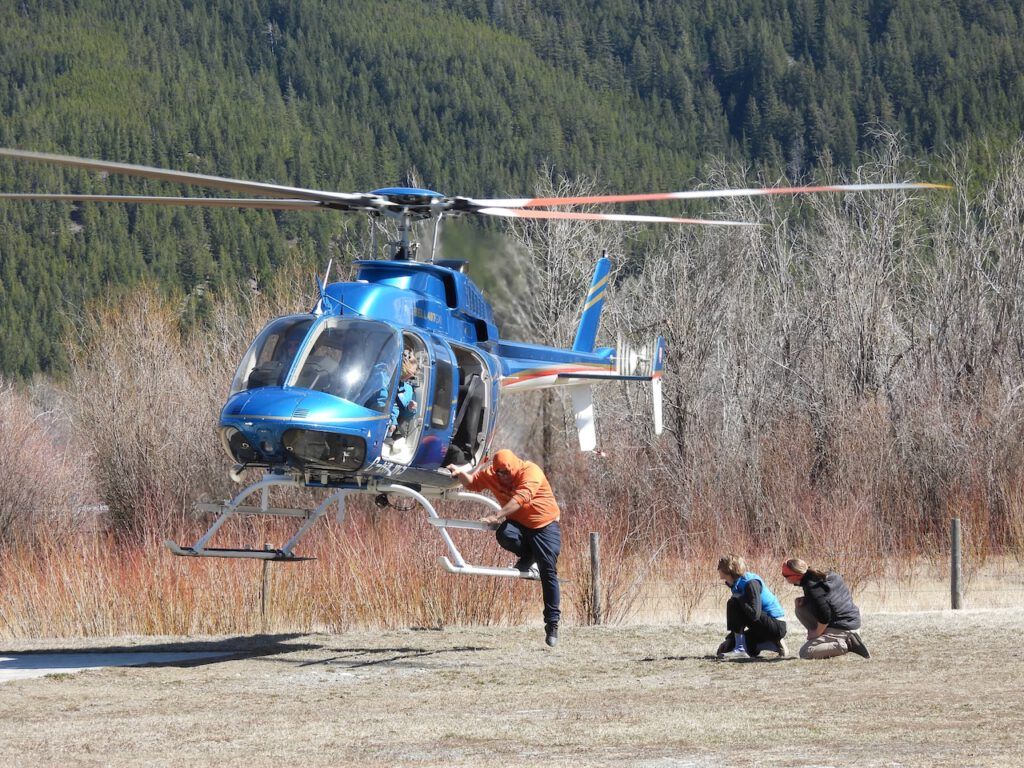

Wow! It’s been a long time since I’ve read any of your posts. Often I would check back and there would be nothing, so I finally decided you must be sick or not doing it anymore or?? How surprised I was to click on the site and find over 2 years of blogs to catch up on! (took over a couple of days). I loved your water color/collage paintings, the book and esp the mural on the shed at the school done with the kids. You sure have a good neighbor in Jade! It’s hard when you can’t find the help you need. I’m jealous of your pond and all the life it supports. Nice to see your blackbirds…..I miss them(I think we’re too high up). Last winter was more than crazy and SO FAR, the hot dry summer is not happening……we’ve finally been getting quite a bit of much needed rain! (Cariboo)
Such a necessary exercise to do especially in early Spring. Praises to each and everyone of you. Thank you Chris for showing ‘we town dwellers’ how important this is to be aware of and just take the training. Anne Silins